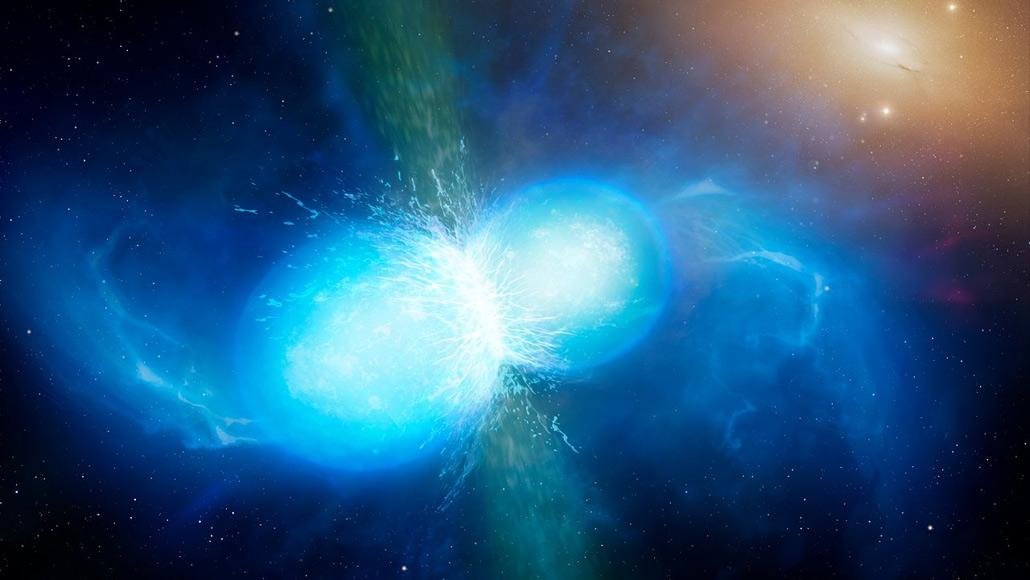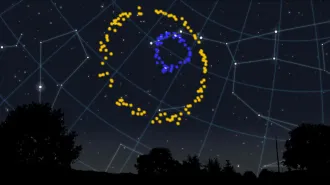
Finding the heavy element strontium in the afterglow of a neutron star merger (illustrated) provides the most direct evidence yet that these collisions set off an exotic chain of chemical reactions called the r-process.
University of Warwick, Mark Garlick, ESO







